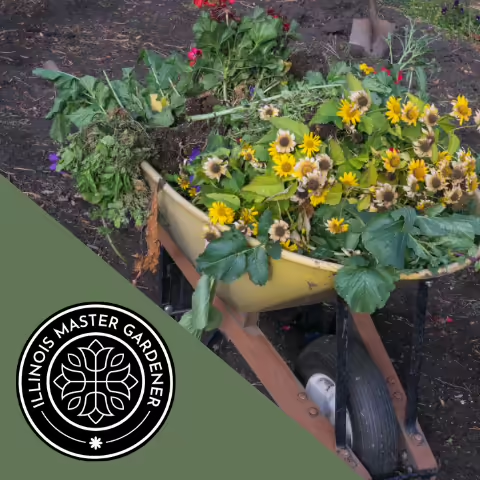Most gardening chores can wait until the weather warms up next year, but if you choose to do them in the autumn instead of waiting until spring, now is the time to get started. Much of the work is just cosmetic except digging up and storing tender bulbs or removing diseased plant material.
After the first frost, you should unearth your gladioli, dahlias, cannas, caladiums, zephyr lilies, or any other tender bulbs you grew this summer. Brush off any extra dirt and pack them in sawdust or dry peat moss, making sure they don’t touch their neighbors, then put them in something breathable like cardboard boxes and store them someplace cool and dark.
If your plants were bothered by fungal diseases like powdery mildew, you need to remove all the plant debris like stems and leaves from the site. They are covered in spores, just waiting until next year when conditions are right to start growing again.
Once the leaves start falling, try to keep them in your yard. They are a free source of organic matter. They store easily in paper sacks or plastic bags ready for mixing with grass clippings and vegetative kitchen scraps to make great compost all year long. You can blow or rake them over your perennial gardens where they provide insulation during winter and lessen the damage from frost heaving.
Any porous containers used for flowerpots should be completely dry before storing them inside a barn, shed, or garage that freezes in winter. The potting mix can be left intact if it is also dry completely. I find it takes bigger 22-inch containers with soil about three weeks of sun and wind to thoroughly dry, so don’t leave this chore until it is too late. You may have to move them temporarily under cover if it rains.
Why should you wait until spring to clean up your flower beds? Beneficial insects need a protected place to over-winter, and leaf and stem debris provide it. Some spend the winter as eggs attached to plant residue. Other insects, such as butterflies and moths, survive as a pupa inside chrysalises and cocoons sheltered under garden debris. A few wait out the winter as adults. An example we’ve all noticed is lady beetles because they tend to end up in the house occasionally. It benefits our gardens to provide shelter for our fellow gardening co-workers.
Ornamental grasses and mums should be left as-is for the whole winter. They both need that aboveground growth for protection. April 1 is the recommended time to cut back the dead leaves from last year. Cold season ornamental grasses may have to be cut down earlier. My Calamagrostis x acutiflora ‘Karl Foerster’ is in a protected spot and starts new growth toward the end of February.
For questions about fall cleanup, tender bulbs, or habitats for insects, call the Edgar County Master Gardeners of Illinois Extension at 217-465-8585.
SOURCE: Jan Phipps, Master Gardener, Edgar County
ABOUT EXTENSION: Illinois Extension leads public outreach for University of Illinois by translating research into action plans that allow Illinois families, businesses, and community leaders to solve problems, make informed decisions, and adapt to changes and opportunities.
